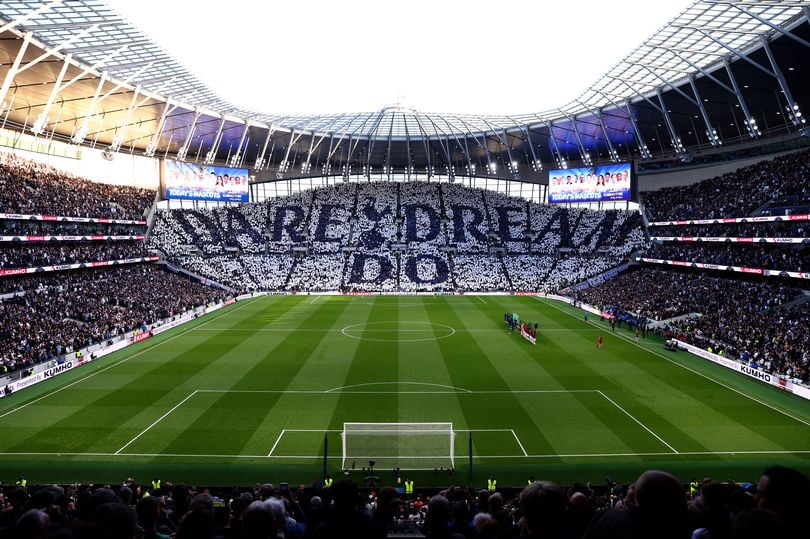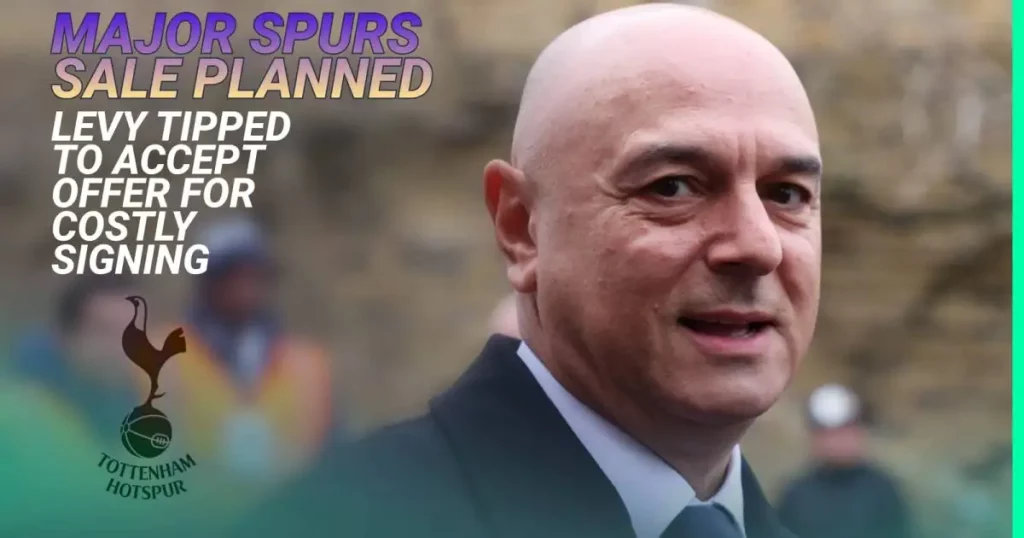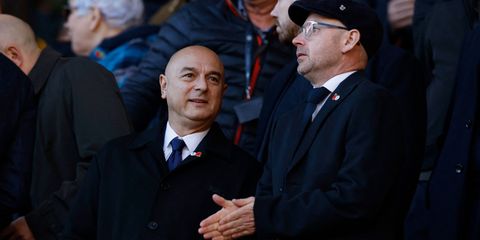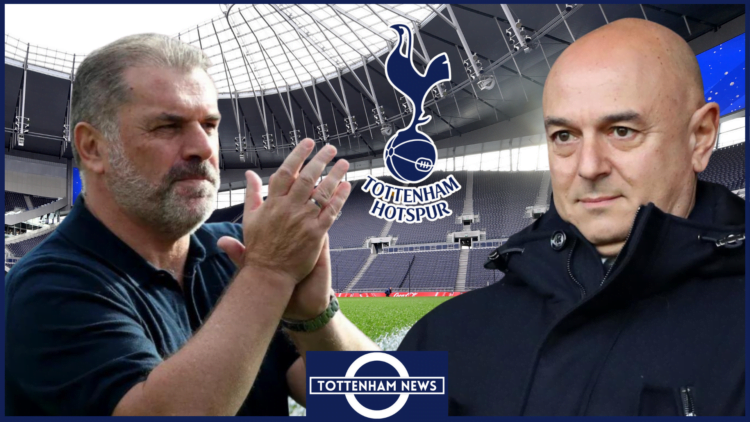Spurs are in a great position relative to their competitors as Premier League clubs debate implementing new financial regulations to replace Profit and Sustainability Rules (PSR).
Tottenham Hotspur Stadium
For Spurs, the Tottenham Hotspur Stadium will be a major source of income.
With ten games left in the current Premier League season, Tottenham Hotspur under Ange Postecoglou are in a good position to make a late push for a spot in the Champions League the following year.
Spurs’ 4-0 victory over Aston Villa, which is currently in fourth place, six days prior was noteworthy despite the team’s relatively discouraging loss to Fulham on March 16. Spurs still have a game against Villa remaining. For Spurs, playing in the Champions League the next season would be priceless.

The new “Swiss Model” system, which entails more teams, more games, and more money, will be implemented at the beginning of the competition for the upcoming season. Spurs have focused heavily on building a strong business in recent years, with the £1 billion stadium project that was finished in 2019 serving as the centerpiece.
In light of the fact that revenue growth is crucial for clubs’ ability to invest in on-field talent, which has long been inextricably linked to competitive success, the Tottenham Hotspur Stadium has the potential to be a catalyst for the team in the years to come. For a very long time, Spurs supporters have had to put up with years of failure in terms of that achievement.
However, the team is among the elite few in European football that possess the resources to spend on winning trophies—a profitable endeavor—and get over the next ten or so years. Premier League teams met earlier this month to talk about the “New Deal for Football,” which focuses on ways to offer the EFL a more fair revenue share.
Before conducting such a vote, half of the member clubs requested to see the new financial standards that would replace the current Profit and Sustainability Rules (PSR). The Premier League is expected to drop the present PSR mechanism, which has drawn a lot of attention and scrutiny in the past few months due to two accusations against Everton and one each against Nottingham Forest and Leicester City.

A lot of the discussion has focused on switching to a model that is more in line with what UEFA now has, the squad cost ratio guideline, which sets a team’s spending limit based on income and the salaries of its head coach and players, plus amortization expenses. With a three-year window to comply, teams were given permission to adhere to UEFA’s squad cost ratio guideline, which went into effect for the 2022–2023 season. Permissible percentages were 90% in year one, 80% in year two, and 70% in year three.
Though some rumors indicate that an 85% percentage may be allowed for those outside of European play, who will be constrained by the 70% that UEFA has in place, the specifics of the Premier League’s own version have to be determined.
Premier League CEO Richard Masters stated, “We have some proposals out for consultation with our clubs about moving and aligning more with the UEFA system,” during a speech to a Parliamentary Select Committee earlier this year. Over the course of the last two years, UEFA has shifted its financial requirements from the FFP to the “squad cost ratio,” which is essentially a wage-to-turnover assessment.We have historically sided with UEFA over time as seven or eight of our clubs participate in European competitions; but, we must decide if this is the right course of action for us, how to proceed, and when.

That “when” seems to be coming up soon.
Although the 20 member teams’ finances vary greatly from one another, each club’s situation will be significantly different. Spurs, however, will almost definitely be in a solid position as the Premier League and European football enter a new era of financial constraints.
The specifics of the Premier League’s own version of a squad cost ratio are still unknown, but it is anticipated that it will closely resemble the current UEFA model, which adds player salaries and head coach wages, player amortisation and impairment (the write-down of player book value), player termination payments to head coaches and players, and agent fees. The club’s operating revenue, player sales profit, and any other transfer income—such as player loan fees—are then divided by those totals.
Subscribe to the newsletter The Bottom Line
Bottom Line, featuring Dave Powell
Subscribe to our new weekly newsletter, The Bottom Line, for unique reporting on the money matters impacting football’s future.
In addition to providing newsletter subscribers with updates and in-depth analyses of the business of Premier League clubs, the EFL pyramid, US sports, and other topics, Dave Powell, Chief Business of Football Writer for Reach Plc, will also conduct interviews with the people who make the major decisions behind the scenes and discuss events at the biggest clubs both domestically and internationally.
Currently, The Bottom Line is giving yearly subscriptions 50% discount.
So, click this link to receive Dave Powell’s most recent updates on Premier League clubs’ financial status.
How would the Spurs do then?
It’s crucial to note that Spurs have not yet released their 2022–2023 financial records, despite some indications coming from previously released reports from UEFA’s Financial Report and Deloitte’s Money League.
According to data provided by football finance specialist Swiss Ramble, Spurs’ pay bill for 2022 was £209 million, of which £178 million was allocated to player and head coach salaries based on the 2021/22 fiscal year. The “relevant” wage total lagged behind Manchester City’s 2022–2023 estimates by about £180 million, with Liverpool (2023) having the next-highest wage at £317 million (2023).
Spurs lag well behind the Preier League’s “Big Six” teams in terms of amortisation costs, which are calculated by dividing the guaranteed transfer fee received over the course of the contract (which is currently capped at an allowed limit of five years). For 2022, the club’s amortisation costs are £80 million, while Manchester United’s amortisation costs are £170 million. Spurs’ amortisation costs were lower than those of Aston Villa (£93m) and Newcastle United (£87m).
At £2 million for Spurs, player impairment—which allows consideration of elements in cases when a player’s marketability has been significantly reduced due to poor form or a major injury—was assessed. This is where the 2022 accounts won’t give the whole picture when it comes to severance payments; the expense of Antonio Conte’s firing will be shown in the upcoming 2022–2023 fiscal year.
Based on Swiss Ramble’s calculations, Spurs’ team has a cost of £259 million. The term “squad cost” refers to all of the expenses incurred in managing the football side of the business that are directly related to on-field events. These costs are totaled and then split against operating revenue, player trading profit, and other transfer income. It has nothing to do with the cost of assembling the team.
With ten games remaining, Son Heung-min can lead Tottenham Hotspur to even greater success in their season.
Spurs, led by captain Son Heung-min, are leading the pack in the race to qualify for the Champions League. Revenue for 2022 was £443 million, but a new Deloitte report projects revenues of £541.6 million for 2023—clearly setting a club record and the first significant step toward utilizing the new stadium to its fullest.
UEFA’s criteria regarding player trading profit permit a best-performing period of 12, 24, or 36 months in order to account for the volatility of the transfer market. The maximum profit Spurs made during either of those periods was £19 million. That equates to adjusted revenue of £463 million.
With a number of 56%, Spurs easily outperforms Manchester City, the next best-performing team, according to the current UEFA squad cost ratio regulations.
It is anticipated that further financial regulations won’t significantly improve the perceived disparity in competitiveness between the “Big Six” and the others. It remains to be seen whether the disparate 85% figure for clubs outside of European competition and the 70% figure for those in European competition are implemented. Given the significant difference in prize money available, there might be some agitation if clubs that qualified for the Europe Conference League were forced to accept the same 70% figure as clubs in the Champions League.
However, compared to some of their competitors, Spurs will be in a situation where they have a lot of leeway and continue to be compliant in the eyes of UEFA and the Premier League.
Based on current estimates, the true squad cost for 2022 would be £324 million instead of £259 million. This means the club would have leeway to raise expenditure in the next years on both wages and transfers.
This image will probably be enhanced once more by using the 2023 statistics when they become available and by the possibility of Champions League football the following season. After closing the gap on Liverpool and moving up to eighth place in the international football rankings thanks to their financial growth, Spurs’ next few years could mark a significant shift in their capacity to actually compete. Spurs are currently ahead of Chelsea and Arsenal.
Read ALSO: Sold for £18M, now worth just £257k: Levy hit jackpot with 6 ft 2 titan at Spurs
Read Also: Time to let go: Spurs must sell £70k/w Pochettino signing who earns more than Bissouma & VDV
Read Also: Spurs to shock fans with record sale this sumner? – Report

